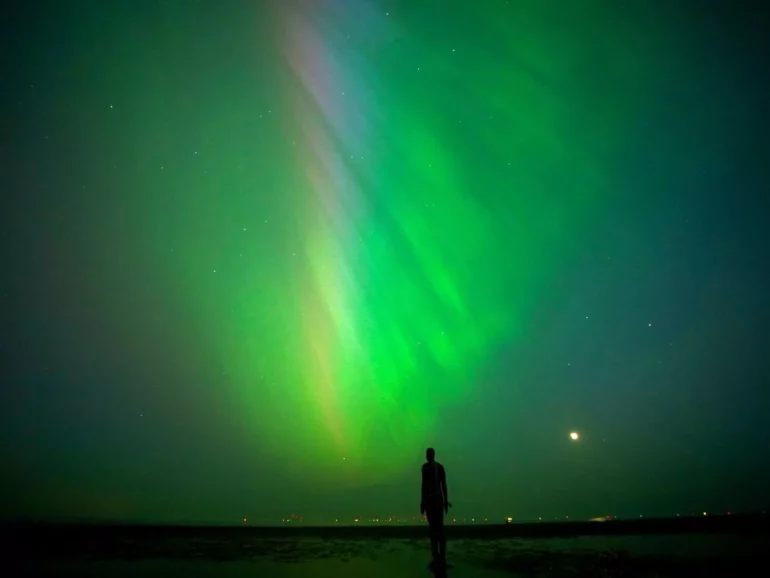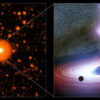The aurora borealis, or northern lights, is known for a stunning spectacle of light in the night sky, but this near-Earth manifestation, which is caused by explosive activity on the sun and carried by the solar wind, can also interrupt vital communications and security infrastructure on Earth. Using artificial intelligence, researchers at the University of New Hampshire have categorized and labeled the largest-ever database of aurora images that could help scientists better understand and forecast the disruptive geomagnetic storms.
The research, recently published in the Journal of Geophysical Research: Machine Learning and Computation, developed artificial intelligence and machine learning tools that were able to successfully identify and classify over 706 million images of auroral phenomena in NASA’s Time History of Events and Macroscale Interactions during Substorms (THEMIS) data set collected by twin spacecrafts studying the space environment around Earth. THEMIS provides images of the night sky every three seconds from sunset to sunrise from 23 different stations across North America.
“The massive dataset is a valuable resource that can help researchers understand how the solar wind interacts with the Earth’s magnetosphere, the protective bubble that shields us from charged particles streaming from the sun,” said Jeremiah Johnson, associate professor of applied engineering and sciences and the study’s lead author. “But until now, its huge size limited how effectively we can use that data.”
The researchers created a novel algorithm to sort through the THEMIS all-sky images (ASI) from 2008 to 2022 and efficiently annotate them using six distinct categories—arc, diffuse, discrete, cloudy, moon and clear/no aurora—making it easier to filter, sort and retrieve the valuable information.
“The labeled database could reveal further insight into auroral dynamics, but at a very basic level, we aimed to organize the THEMIS all-sky image database so that the vast amount of historical data it contains can be used more effectively by researchers and provide a large enough sample for future studies,” said Johnson.
Co-authors on the study include Amy Keesee, associate professor of physics and astronomy in UNH’s Space Science Center; Doğacan Su Öztürk, Donald Hampton and Matthew Blandin, all from University of Alaska–Fairbanks; and Hyunju Connor from NASA Goddard Space Flight Center.
More information:
Jeremiah W. Johnson et al, Automatic Detection and Classification of Aurora in THEMIS All‐Sky Images, Journal of Geophysical Research: Machine Learning and Computation (2024). DOI: 10.1029/2024JH000292
Provided by
University of New Hampshire
Citation:
AI categorizes 700 million aurora images for better geomagnetic storm forecasting (2025, January 9)



